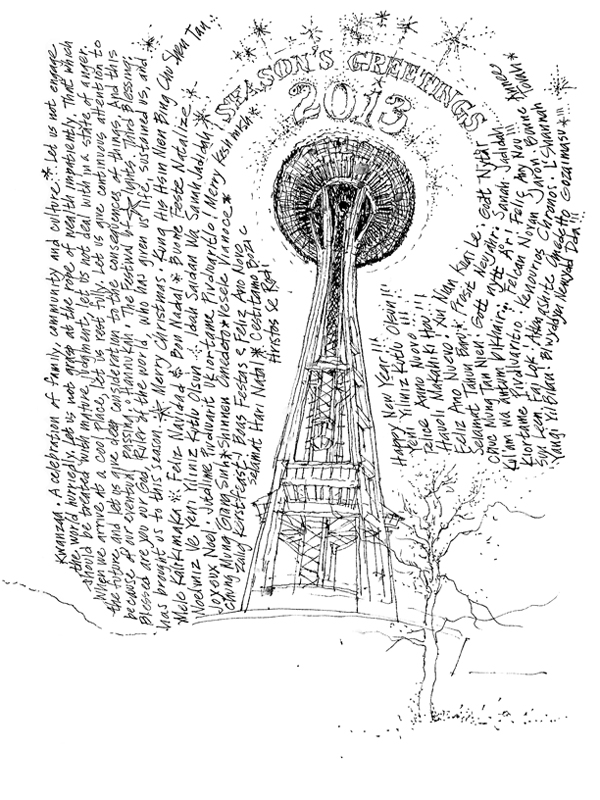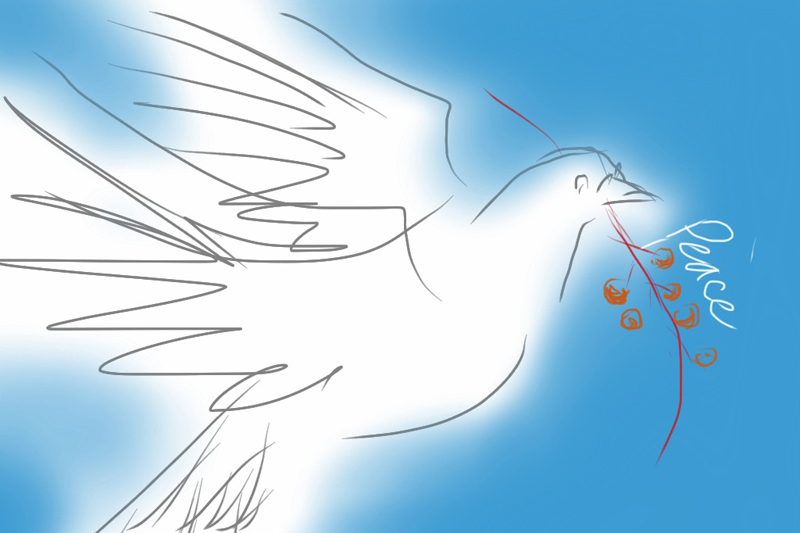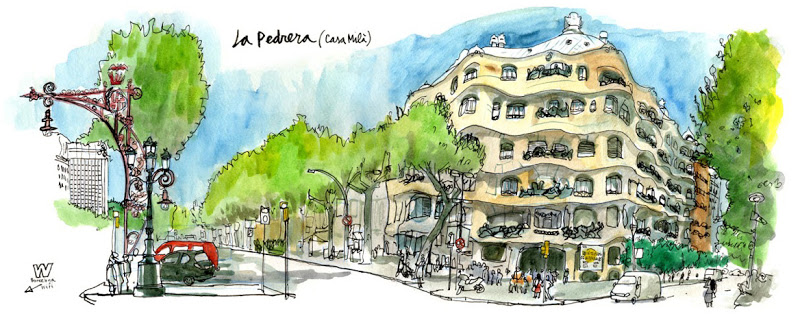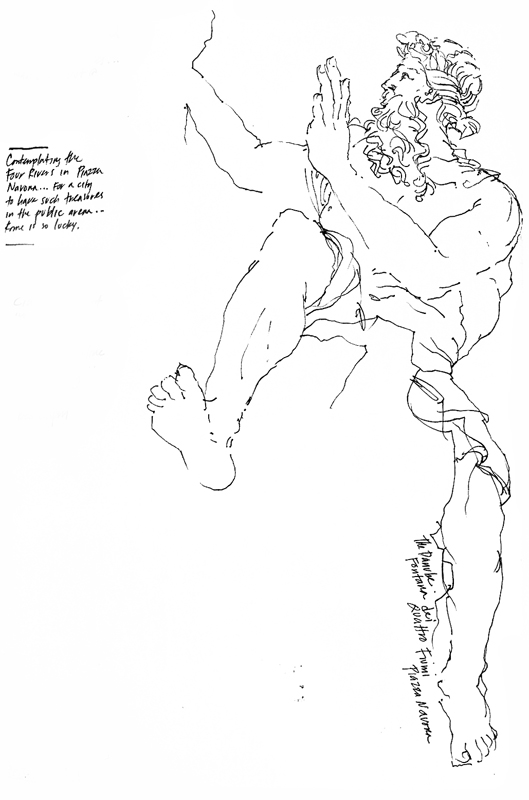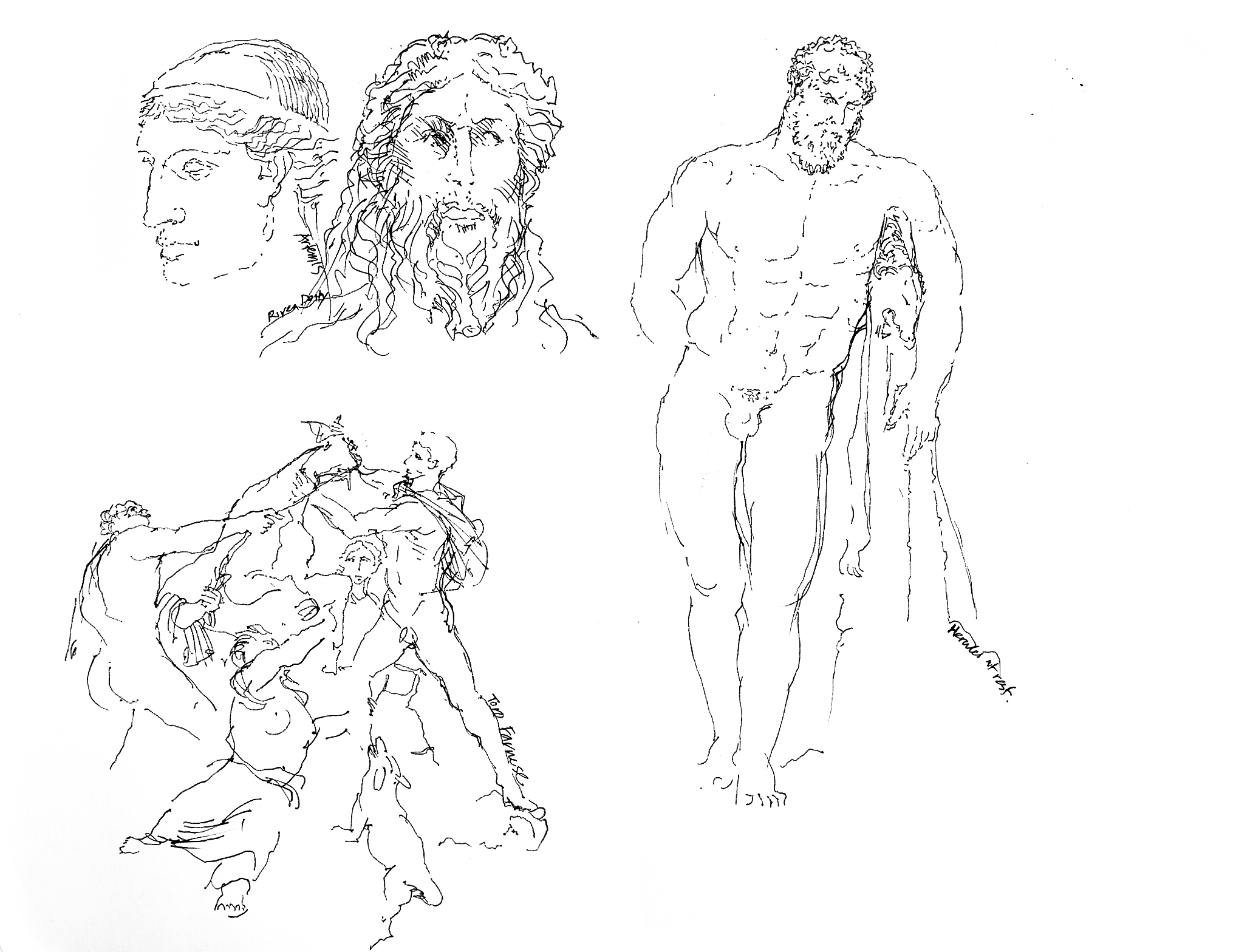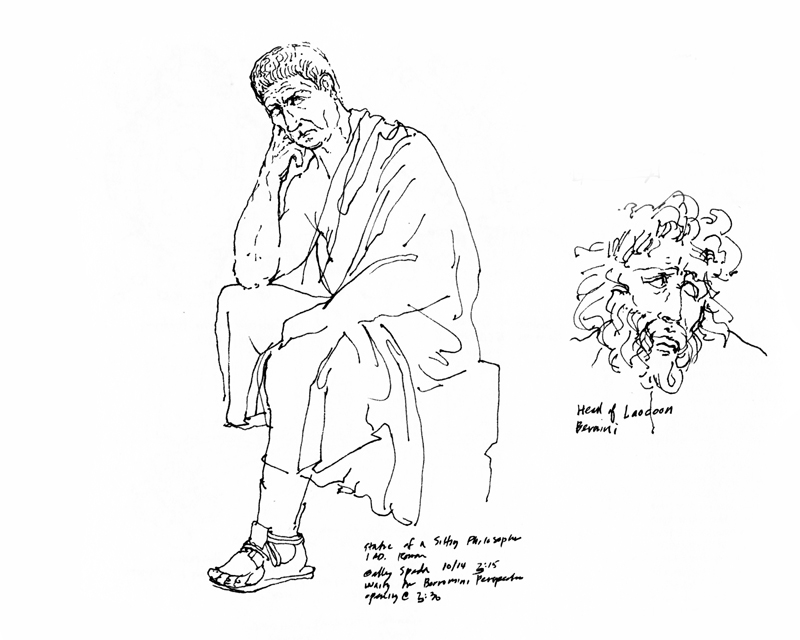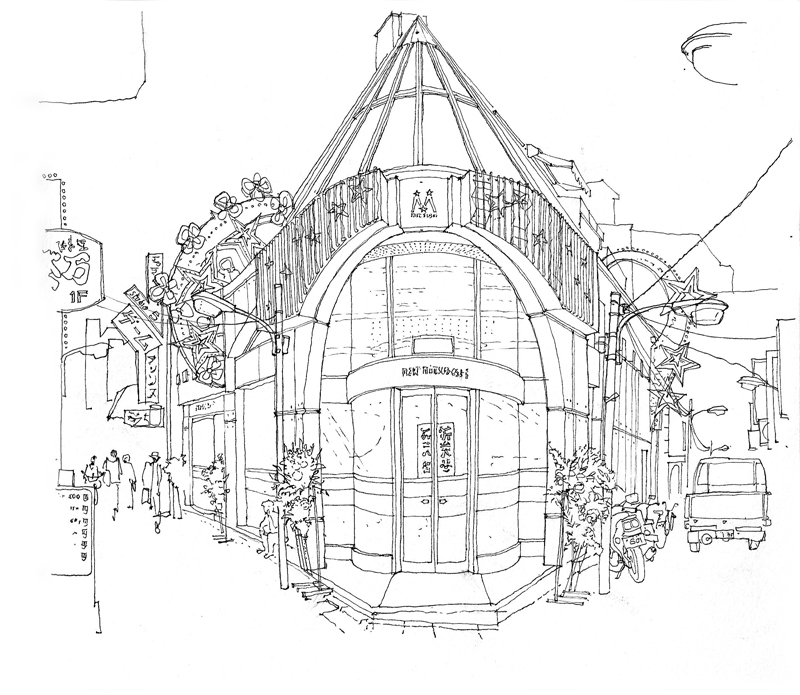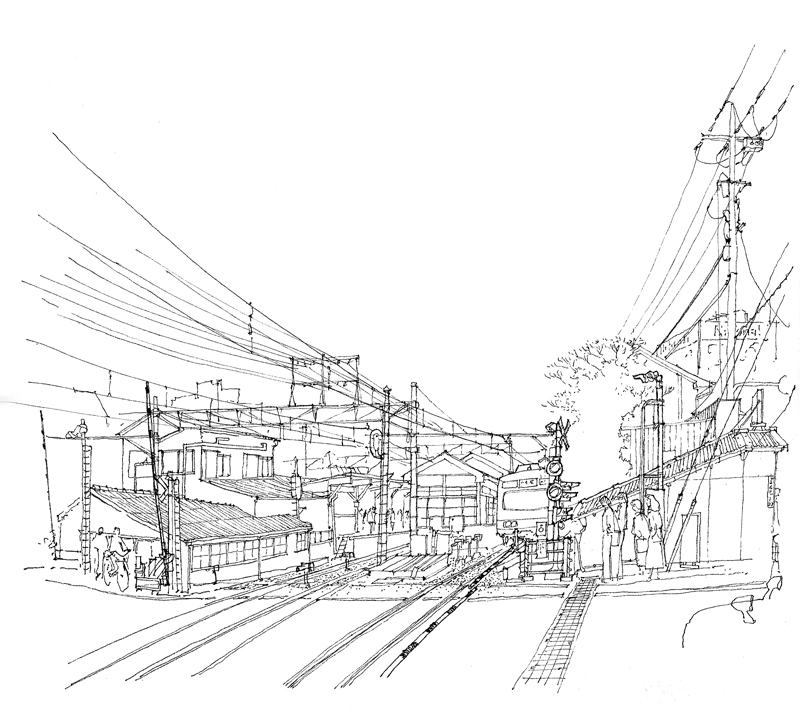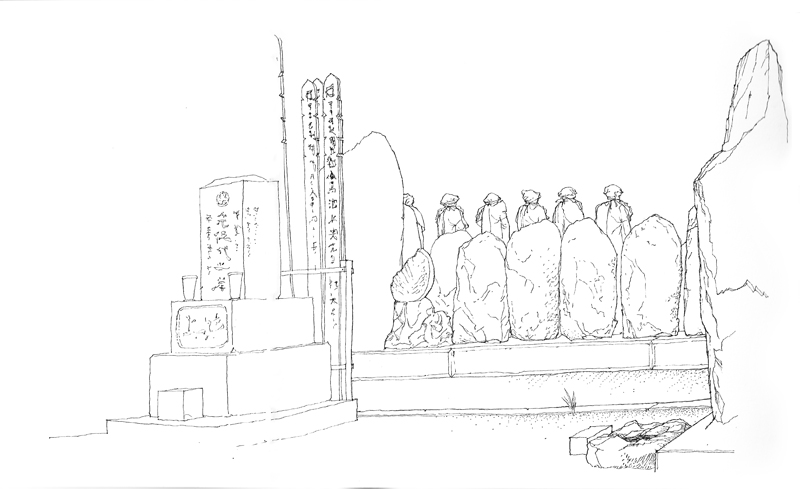Approaching the big Seven-O, moving from Ballard back to the Fremont neighborhood, adding a new title to my list of publications, teaching in Rome in the fall. I hope everyone’s New Year will be fulfilling as we respond to necessities, take advantage of opportunities as they arise, and prepare diligently always!
Monthly Archives: December 2012
Season’s Greetings!
The Power of the Line II
The Seattle Urban Sketchers met yesterday on a cool, rainy Sunday morning at the Experience Music Project, designed by Frank Gehry. While I may not be a fan of the design as a whole, I do appreciate the amazing spatial compositions and vignettes created by the curved steel framework and the metal and plywood sheathing.
On the one hand, spaces such as this lobby of the EMP are relatively easy to draw because there are few straight lines and one need not pay too much attention to the pesky subject of perspective. On the other hand, what is often difficult is ensuring that the curvilinear surfaces do not overpower the sense of space as they hover overhead.
In this case, I started with the one measurable item I could see, the vertical column, and then worked my way from the contours of one curved surface to the next…and the next…and the next, all the time trying to maintain the spatial relationships of the major forms. The view is obviously beyond one’s normal cone of vision but it does replicate the feeling of being enveloped by the space. The only thing missing are the bright colors of the metal sheathed walls.
Barcelona!
Urban Sketchers has just announced that the 4th International Urban Sketching Symposium will take place in Barcelona, July 11–13, 2013. A beautiful setting for what looks to be an exciting event, with lots of workshops, panels and lectures.
For more information and to sign up for updates, see <www.urbansketchers.org>.
The Power of the Line
The line is the essence of drawing. It is a humble element, made simply by the tip of a pen or pencil as we move it across a receptive surface. Once drawn, a line chronicles the movement by which it was created. It can describe contour and shape, even texture.
More importantly, the line is able to convey to the mind’s eye three-dimensional forms in space, often not by its presence but rather by its absence—where we decide to stop a contour…and pick it up again.
These sketches of sculptures in and around Rome and Naples are prime examples of this amazing power of drawn lines to suggest what in reality is not present on the page.
A Story to be Told
I have often dreamed of writing and illustrating a children’s book, or at a larger scale maybe even a graphic novel. Always stopping me, however, was the lack of a genuine story to be told, a narrative with emotional and intellectual content. Technique, no matter how well developed, could only carry me so far.
That is why drawing on location suits me. Instead of having to create imaginary settings and characters, I can rely on the visual stimuli derived from direct observation. Real settings that can be experienced in a straightforward manner provide the raw material for my sketches, which I can then interpret in a purely descriptive manner or alter to suit my temperament.
This view of the train leaving O-Okayama for Tokyo is from real life, but even when drawing from a photograph, which lacks the immediacy of drawing on location, the visual information provides a starting point for thinking about and responding in a graphic manner. It’s a matter of fiction versus reality and I imagine even a lot of fiction is based on personal experiences, perceptions, and insights.
Behind each of these sketches lies a possible story. Maybe some day, if I am fortunate enough, I will be able to knit these into a more compelling one.


